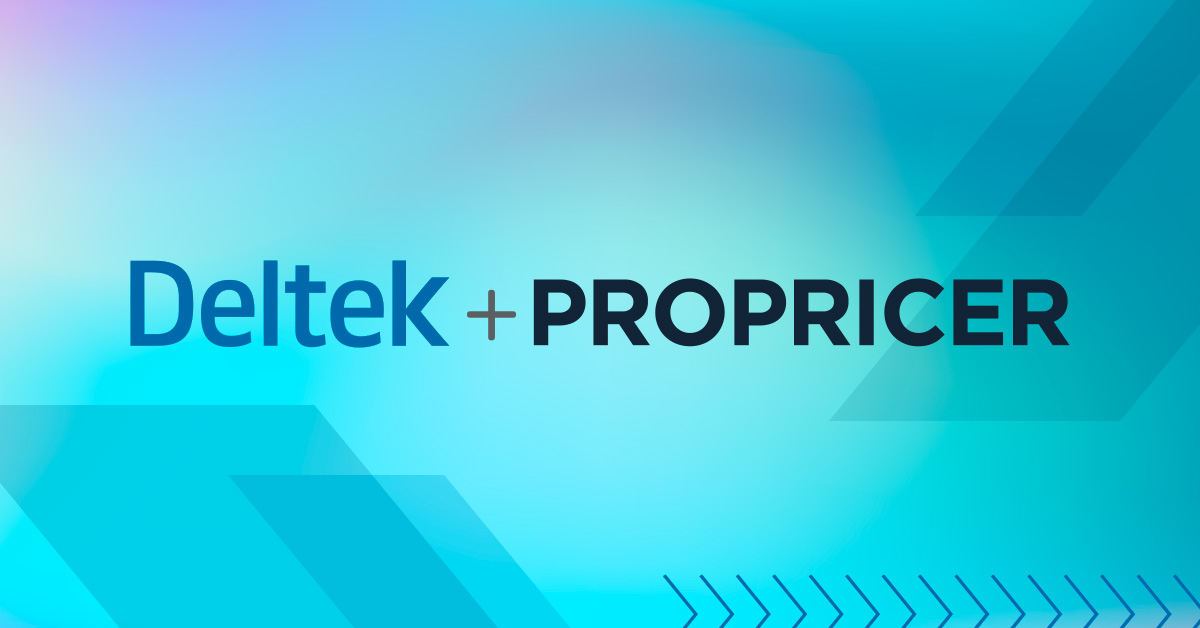What’s a contractor’s goal in any proposal process? To prove they’re the best value to your agency for their final price. The process you initiate to open the proposal gates to your most qualified contractors can be the most critical filtering work you’ll execute.
It’s called the source selection process; fulfilling it is your essential goal in running a contract opening efficiently and economically. But what does it entail? Let’s start at the beginning and then explore the downstream dimensions of source selection.
What is source selection in government contracts?
At its core, source selection in government contracts is a structured process that closely resembles the auditioning and casting of actors for a major Hollywood production. You have an abundance of performers, each bringing their unique talents to the screen, hoping for that starring role. Yet, only one or a select few can make the cut.
In our government contracting theater, the performers are the contractor firms, and their proposals are the auditions. "Source selection" is the methodical process of evaluating these auditions to find the perfect match for the government's role.
Officially, the Federal Acquisition Regulation (FAR) serves as the script that informs this performance and involves three key parts: Part 13 (Simplified Acquisition), Part 14 (Sealed Bidding), and Part 15 (Contracting by Negotiation).
Let's take a closer look at FAR Part 15. Consider it similar to a director who doesn’t just cast based on the lowest salary demand but considers the entire talent package. Here, we aren't only looking at the bottom-line price of a proposal. We're keenly interested in value, those non-cost factors that can dramatically influence the success of our production. For instance, also take into consideration a contractor’s past performance, technical expertise, or innovative problem-solving approaches.
Imagine you’re procuring a state-of-the-art IT system. While Contractor A may propose the lowest price, Contractor B offers an advanced technology solution with training and maintenance included, which, in the long run, provides more value. This deeper look, this more intricate play of weighing value versus mere price, epitomizes what’s outlined in FAR Part 15.
Contracting firms: It's not just about the price tag. It's about delivering a performance that brings value, efficiency, and success to the government’s mission.
What are commonly used methods in source selection?
The method you use to select an ideal contractor can significantly influence your final result. As a steward of government funds and trust, you should understand the subtle nuances of these methods.
First, let's take a look at Formal Source Selection. It's for those high-stakes, high-dollar procurements where precision and due diligence are paramount. In such cases, the procuring contracting officer (CO) doesn’t necessarily hold the baton of responsibility. Instead, a collective called the Source Selection Authority (SSA) steps in, orchestrating the evaluation based on a carefully crafted plan for that procurement. Imagine an acquisition for a multi-year cybersecurity project for the Pentagon. Given its intricacies and monumental value, this would surely demand the precision of formal source selection.
Now, let's move into the more relaxed realm of Informal Source Selection. It's straightforward, and the procuring contracting officer (PCO) is at the helm. They'll decide which proposal is best for your government agency without an entourage of officials providing formal input. Let’s say the procurement involves furniture for your agency offices. Given this procurement’s straightforward nature, the PCO might decide, on the spot, which supplier offers the best blend of quality and cost.
But let's not forget the overseers in the grand scheme of procurement— your agency heads. They watch from the sidelines, ensuring a contractor’s performance aligns with the grand agency vision. While the CO sometimes dons the hat of the SSA, there are moments when your agency head might feel the need for special leadership, especially for significant procurements. Take, for instance, the Department of Defense: if we're talking about a contract with an estimated value soaring to $100M or more, the SSA head role goes to someone other than the CO or PCO.
Knowing when to apply each scenario ensures your agency selection process remains harmonious, efficient, and valuable.
What is included in a source selection plan?
At the heart of every source selection lies the balancing act of weighing cost or price against the excellence of the proposed solution. For instance, while a cutting-edge software solution may come with a hefty price tag, its unparalleled technical brilliance, the adeptness of its management team, and the qualifications of its leading technicians can tip the scales in that contracting firm’s favor.
Then, there's the ever-crucial dimension of past performance. Picture it as a contracting firm’s resume. Just as directors want to know an actor's previous roles before casting them in a blockbuster, a contractor's past successes and failures must be considered for acquisitions surpassing FAR 15.304 and DFARS 215.304 thresholds. Of course, our PCO or CO might decide to skip this step, but only with a documented rationale.
In the grand scheme, other factors, like small-business participation, emerge based on legal and regulatory mandates. Consult FAR 15.304 and its adjuncts to ensure these requirements for your agency’s selection plan don't slip through the cracks.
From here, the journey becomes more bespoke. Your acquisition team or CO uses its wisdom to weave in additional evaluation factors, subfactors, and elements—only the most essential and impactful. Overburdening the evaluation with excessive criteria complicates the selection without enhancing its elegance.
Select these nuances based on precise user needs, acquisition goals, comprehensive market studies, and a deep dive into potential risks. Once you send out your Request for Proposal (RFP), these factors guide contractors to craft their most compelling proposals. They reveal the government’s thought process, allowing a contracting firm to glimpse your acquisition team’s collective mindset.
Lastly, consider the practicality of introducing "go/no go" gates. Much like the entrance to an exclusive cinema opening, these gates determine who gets to participate in your source selection process.
In sum, the source selection plan is not just a checklist. It assures that every government dollar your agency spends has purpose, precision, and promise.
What are examples of source selection criteria?
Let's look at the quintessential elements of source selection criteria – which make up your roadmap to ensuring a seamless evaluation process:
- Conduct market research for robust competition. Begin by immersing yourself in thorough market research. This doesn't just provide insights into the available players in the field but lays the foundation for fostering genuine competition. For example, when searching for cybersecurity vendors, a government pro might start by attending industry conferences, exploring trade journals, and setting up informational interviews with leading firms. A well-informed professional knows the market terrain.
- Analyze risk, as the FAR directs. Adherence to FAR 7.105 for risk analysis isn't solely about compliance. It's about foreseeing possible pitfalls and addressing them proactively. For instance, when purchasing new fleet vehicles, risk analyses might include considerations like future parts availability, historical maintenance costs, and known manufacturing issues. Understand potential risks, and you're better equipped to address them.
- Hierarchically list your factors and subfactors. By laying out these criteria in a clear hierarchy, you simplify the evaluation process, ensuring you assess each proposal on consistent grounds. For example, primary factors in a cloud services contract include security precaution, uptime ratio, and cost vs. value. Under security, subfactors could be data encryption, intrusion detection, and incident response capabilities.
- Spotlight key discriminators. The art of selection is understanding what differentiates one proposal from the next. Suppose you, as an agency, are evaluating software solutions. The key discriminators could be a user-friendly interface, customization options, and customer support. But remember, it's not just about identifying them; rank them in order of importance to prioritize decision-making.
- Secure SSA approval. Before moving forward, ensure you have the green light from your Source Selection Authority (SSA) on your list of factors and subfactors. For instance, after listing out criteria for a construction contract, meet with SSA to review and receive feedback. This step is essential for alignment and ensures that the process remains transparent.
- Draft RFP communication. Be explicit if you're employing a draft RFP. In an RFP for an IT project, you detail factors like system compatibility, scalability, and vendor experience, emphasizing their order of significance. This clarity can eliminate confusion down the line.
- Initiate pre-solicitation dialogue. An active exchange before the solicitation can be a treasure trove of feedback. If seeking solutions for a new communication system, host a pre-solicitation conference where potential vendors can ask questions and provide insights. This collaborative approach can illuminate areas that you might inadvertently overlook.
- Embed transparency into the formal RFP. Once you've crystallized your RFP, communication remains vital. For a consulting services RFP, explicitly state the focused weightage given to experience, approach, and cost. Inform offerors about the factors and subfactors and their relative weights with absolute clarity. Leave no room for ambiguity.
What is the role of the Source Selection Advisory Council?
The Source Selection Advisory Council (SSAC) is an invaluable asset you may need to become more familiar with. When dealing with high-value source selections—specifically those exceeding $100 million—your procurement process will differ from less valuable contracts.
Here is where the SSAC comes into play. Comprising a select group of either military or government civilian personnel, the SSAC is appointed directly by the SSA. But they aren’t just your average team. They are expert advisors, the brains behind the operation, ensuring the source selection process unfolds with the utmost precision and care.
If source selection on a contract of this magnitude were up to a CO exclusively, they wouldn’t rely solely on intuition, would they? Instead, seek the counsel of key experts who can provide insights, the SSA. Similarly, while holding the ultimate authority, the SSA leans on the SSAC to offer specialized guidance.
One of the pivotal tasks the SSA often delegates to the SSAC is reviewing the evaluation criteria—the foundational step we’ve already discussed. Let’s say your agency is looking to commission a new IT system. The SSAC would ensure the technical specifications are met and weigh in on other vital factors like a contractor's past performance, financial stability, and more. It’s like ensuring that a proposed IT system isn’t just advanced but is also sustainable, reliable, and matches the agency's long-term objectives.
The SSAC is a robust support system, underpinning the source selection process with expertise and a commitment to excellence. For government agency contracting professionals, understanding and collaborating effectively with the SSAC can make the difference between a standard procurement process and a truly exceptional one.
Protest Procedures: Contractors should know how to lodge protests if they believe an agency has conducted a source selection process unfairly or inaccurately. A contractor hoping to work with you can file a protest with your agency, the Government Accountability Office (GAO), or the Court of Federal Claims. A clear understanding of the protest process can aid any contractor in protecting their rights. And as a potential contracting partner, your agency is obligated to help a contractor become aware of this.
How does ProPricer help your agency streamline source selection?
ProPricer Government Edition emerges as a game-changer for agencies looking to optimize their source selection process. This software is an all-encompassing solution that simplifies cost and pricing analyses, fostering transparency and consistency.
One of its standout features is its ability to automate the labor-intensive tasks associated with proposal evaluation. Instead of wading through stacks of digital spreadsheets, analysts can now seamlessly retrieve, compare, and analyze vendor price data with just a few clicks. The result? A reduction in errors and a cost- and price-focused source selection process that's notably quicker and more efficient.
Government contracting is known for its stringent regulations and need for auditable trails. ProPricer doesn’t disappoint. It not only aids in maintaining compliance but also provides a robust audit trail that showcases every step of the decision-making journey.
By offering a harmonized platform where government agencies and contractors can converge (the latter via ProPricer Contractor Edition), ProPricer cultivates a collaborative environment, ensuring that the source selection process is both transparent and above board. Contact us now for a demo >
Sources




